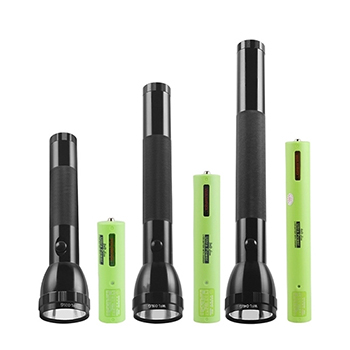How to Clean Battery Corrosion in Flashlights?
Regardless of any equipment, it is inevitable that there will be minor problems after a long time of use, and the flashlight is no exception. Among them, battery corrosion and leakage a relatively common problems, so what should we do if we encounter them? ATO will bring you solutions on how to clean flashlight battery corrosion.
How to solve the flashlight battery corrosion problem?
Regular cleaning
After the flashlight battery has oxidized, you can try dipping some vinegar or white wine with a cotton swab and gently wipe the port and inner wall of the battery. This can remove the oxide layer of the battery, make the current flow unobstructed, and restore the normal use of the flashlight. Be careful not to use water or electrolyte to clean the battery, so as not to cause a short circuit of the battery.
Treatment method for slight oxidation of battery
If the flashlight battery is slightly oxidized, use a piece of fine sandpaper or steel wool to wipe the battery pole and battery holder to remove the oxide layer and restore the flashlight battery to normal. But remember not to twist the battery by hand, so as not to damage the flashlight battery holder.
Treatment method for heavy oxidation of battery
If the flashlight battery is severely oxidized, you can use battery pliers or pliers to clamp the bottom of the battery, and gently rotate the battery to make the bottom oxide fall off. Then soak the battery in vinegar or white wine for about 10 minutes, and then wipe it clean. If there are too many oxides, causing the flashlight to not work properly, it is recommended to replace it with a new battery.
What should I do if the upper part of the battery is moldy and rusty?
If there are signs of rust on the place where the battery is placed, we can use tweezers to remove the LED bright flashlight corrosion, and then scrape off the remaining rust on the spring leaf and spring seat. If it is difficult to completely remove it, you can use fine sandpaper for grinding, completely remove the rust, and let the metal background color appear.
Precaution
- Do not use overvoltage, the voltage should not exceed 4.5V, and the positive and negative poles of the battery should not be reversed, otherwise, the circuit board will be burned. Pay attention to controlling the temperature change of the torch, and non-professionals should not open the circuit board.
- The natural discharge rate of the lithium battery will release about 1% or less of its charge every day when it is not in use. Although it is slow, it should be avoided for too long.
- During use, if the discharge suddenly drops, it is likely that one of the batteries in the battery pack has short-circuit phenomena such as broken grids, softened plates, and active materials falling off the plates. At this time, you should promptly go to a professional battery repair agency for inspection, repair, and matching.
- It is strictly forbidden to be exposed to the sun. An environment with too high a temperature will increase the internal pressure of the battery and force the battery pressure limiting valve to open automatically. The direct consequence is to increase the water loss of the explosion-proof flashlight battery. Excessive dehydration of the battery will inevitably lead to a decrease in battery activity, accelerate the softening of the plate, and cause fatal damage such as heating, swelling, and deformation outside the shell during charging.
- When the bulb cannot maintain high brightness, please replace the battery and charge it to avoid damage to the battery due to over-discharge. Unscrew or take out the battery when it is extinguished, so as to prevent the bottom cover from breaking the bottom of the battery and flowing out the slurry. The state of power loss means that the battery is not charged in time after use. The longer the idle time in the state of power loss, the more serious the battery damage will be.
- If the flashlight is not used for a long time (one month or longer), please take out the battery to avoid chemical corrosion. If the battery is not used for a long time, it should be fully charged and stored, and it will be charged and discharged once in about three months.

